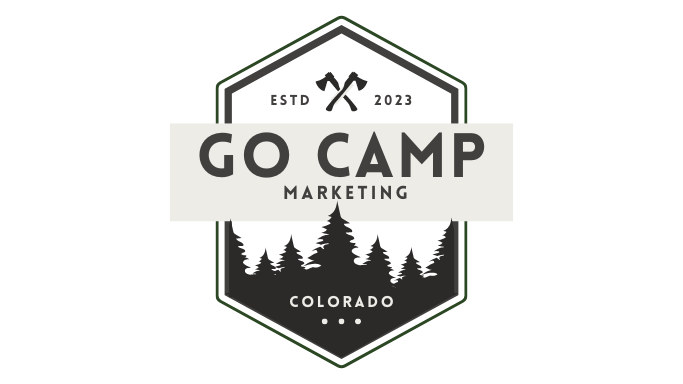How to Advertise Summer Camps
It’s January, which means it’s the perfect time to start ramping up your marketing strategies to fill spots for your summer camp. By leveraging online trends and focusing on low-cost marketing methods, you can effectively reach parents and kids, building awareness and securing enrollments. Here are some of the best tactics to ensure your summer camp stands out and gets noticed.
Here are 6 tips to get started with your 2025 marketing strategy:
1. Use Social Media to Your Advantage
Social media is where kids and parents spend a significant amount of time, making it an essential tool for your summer camp marketing. Platforms like Facebook, Instagram, and TikTok are key to engaging with your audience.
Key Platforms by Time Spent
| Social Media Platform | Average Time Spent per User (2024) |
| TikTok | 90 minutes per day |
| 60 minutes per day | |
| 33 minutes per day | |
| YouTube | 70 minutes per day |
Tips for Social Media Success:
- Instagram Reels and TikTok Videos: Focus on creating quick, engaging, and visually appealing videos. Showcase your camp’s unique offerings like themed days, talent shows, and outdoor adventures. For example:
- Post a “day in the life” video showing a camper’s activities.
- Share testimonials from past campers and parents.
- Use music trends on TikTok to boost visibility.
- Interactive Posts: Run polls or quizzes about favorite camp activities or what kids are excited for this summer.
- Behind-the-Scenes Content: Share snippets of staff preparing for the camp season or setting up activities. Parents love transparency.
- Facebook Groups: Engage with parenting groups by sharing tips for preparing kids for summer camp or hosting live Q&A sessions.
- Hashtags: Use trending and relevant hashtags like #SummerCamp2025, #FunInTheSun, and #AdventureAwaits to increase post reach.
2. Optimize Your Email Marketing Campaigns
Email marketing remains one of the most cost-effective ways to reach parents. Creating compelling, visually appealing email campaigns can help you stay top-of-mind as parents begin planning their summer schedules.
2024 Email Campaign Data
| Metric | Average Rate |
| Open Rate | 33% |
| Click-through Rate | 6% |
| Conversion Rate | 1.5% |
Tips for Effective Emails:
- Timing Matters: Send emails early in the year (January and February) when parents start researching summer plans.
- Compelling Subject Lines: Examples include “Secure Your Child’s Spot: Summer Camp Enrollment Now Open!” or “Give Your Kids a Summer to Remember!”
- Segment Your Audience: Personalize emails by tailoring content to parents of first-time campers versus returning families.
- Incentives: Offer early bird discounts, sibling discounts, or referral bonuses to encourage signups.
- Interactive Content: Include clickable links to virtual tours, activity calendars, or camp testimonials.
Additional Tips for Email Marketing:
- Leverage Previous Camper Lists: Use information from past campers and their families. Sending “We Missed You Last Summer” emails can re-engage families who didn’t attend the previous year.
- Build New Lists: Gather email addresses from website signups, social media contests, or during community events.
- A/B Testing: Test different subject lines, email designs, and CTAs to see what resonates most with your audience.
- Mobile Optimization: Ensure emails are mobile-friendly, as many parents will open emails on their phones.
- Track Metrics: Use tools to monitor open rates, click-through rates, and conversions to refine your strategy.
Recommended Tools and Platforms:
- Mailchimp: Ideal for small businesses with features like automation, segmentation, and analytics.
- Constant Contact: Great for easy-to-use templates and social media integration.
- HubSpot: Offers advanced tracking and CRM integration for larger campaigns.
- ActiveCampaign: Excellent for personalized, behavior-based email campaigns.
3. Build Awareness with Paid Ads
Even with a small budget, paid ads on platforms like Facebook and Instagram can drive significant traffic to your website or landing page.
Suggested Ad Strategies:
- Geo-Targeting: Focus on ads in local communities or within a specific radius of your camp.
- Age-Targeting: Use Facebook’s and Instagram’s targeting tools to show ads to parents aged 25-45.
- Ad Creative: Use bright, happy images or short videos of kids participating in activities. Examples include:
- A video of kids roasting marshmallows over a campfire.
- A carousel ad showcasing different activities like swimming, hiking, and arts and crafts.
- Call-to-Action (CTA): Include strong CTAs like “Enroll Today!” or “Limited Spots Available” to create urgency.
4. Leverage Local Influencers and Partnerships
Partnering with local influencers or parent bloggers can give your camp an authentic and trusted voice. Influencers can help you reach local audiences effectively.
Examples of Partnerships:
- Collaborate with mommy bloggers to review your camp. Offer them free enrollment for one child in exchange for a detailed blog post or video.
- Partner with local businesses, like schools or children’s stores, to cross-promote your camp.
- Host a giveaway for a free week of camp, encouraging influencers to promote it on their platforms.
5. Enhance Your Website’s User Experience
Your website is often the first place parents will go to learn about your camp. Make sure it’s visually appealing, easy to navigate, and mobile-friendly.
Must-Have Features:
- Clear Calls-to-Action: Prominently display “Register Now” buttons on every page.
- Testimonials: Include video testimonials from parents and campers to build trust.
- FAQs: Address common concerns about safety, pricing, and daily schedules.
- Chat Feature: Implement a live chat option to answer questions instantly.
6. Host Virtual Open Houses
Virtual open houses allow parents to “tour” your camp from the comfort of their homes. These events can provide a glimpse into daily camp life and answer questions in real-time.
Tools to Use:
- Live Tours: Use Zoom or Google Meet to walk parents through your facilities in real-time.
- Pre-Recorded Content: Share videos of past camp sessions, including fun activities, meals, and camper cabins.
- Q&A Sessions: Dedicate time during the virtual open house to answer common questions.
You Can Do This!
Marketing your summer camp doesn’t have to break the bank. By leveraging social media, optimizing email campaigns, and utilizing local influencers, you can create buzz around your camp and secure those all-important enrollments. Start now, and you’ll see your efforts pay off as summer approaches.

